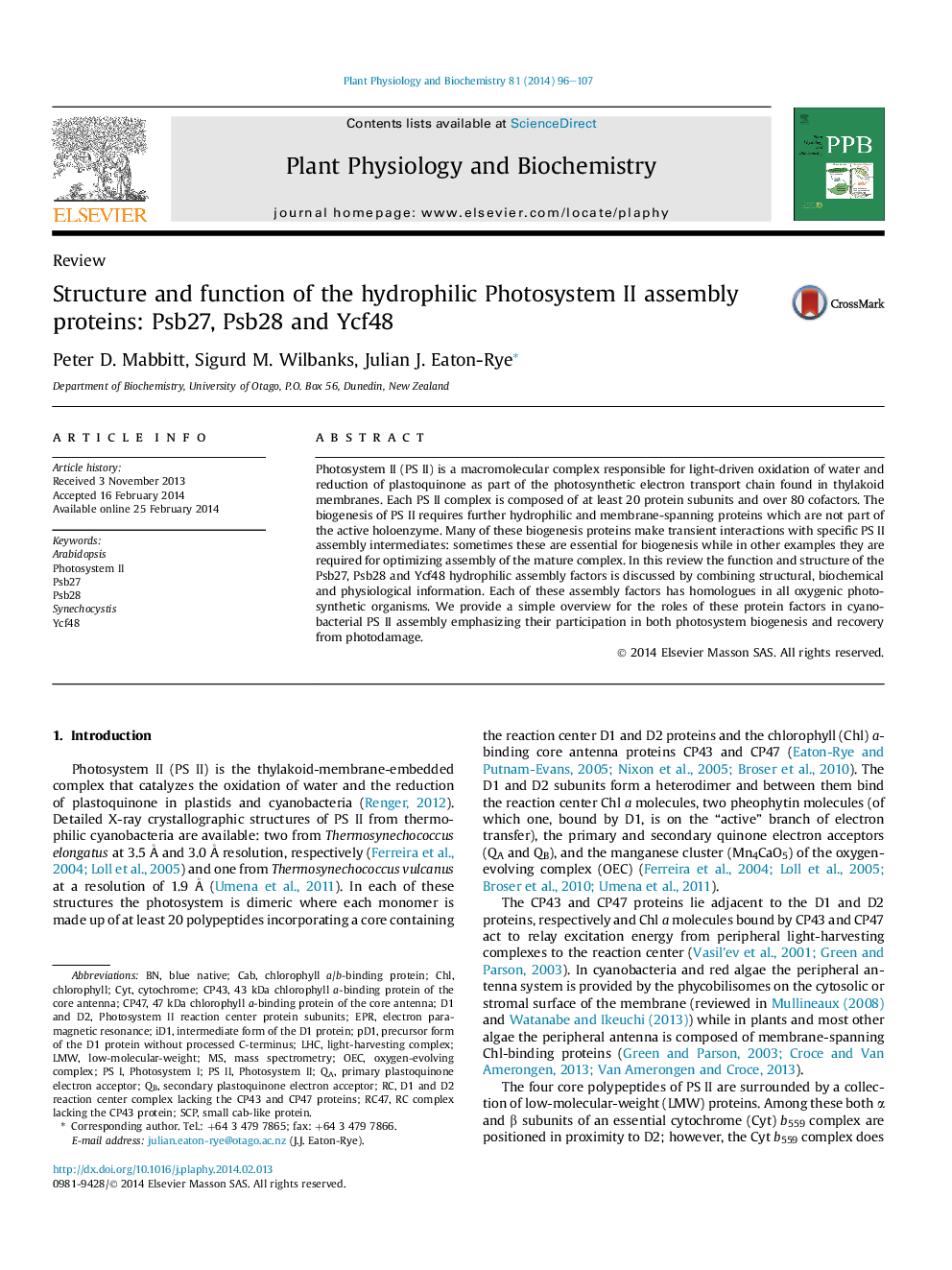| Article ID | Journal | Published Year | Pages | File Type |
|---|---|---|---|---|
| 2015852 | Plant Physiology and Biochemistry | 2014 | 12 Pages |
•We review structures and biochemistry of the PS II proteins Psb27, Psb28 and Ycf48.•These hydrophilic assembly factors are in all oxygenic photosynthetic organisms.•Incorporation of the reaction center into active PS II monomers involves Ycf48.•Psb27 and Psb28 participate in incorporating CP43 and CP47 subcomplexes, respectively.•Roles of these factors in biogenesis and repair after photodamage are explored.
Photosystem II (PS II) is a macromolecular complex responsible for light-driven oxidation of water and reduction of plastoquinone as part of the photosynthetic electron transport chain found in thylakoid membranes. Each PS II complex is composed of at least 20 protein subunits and over 80 cofactors. The biogenesis of PS II requires further hydrophilic and membrane-spanning proteins which are not part of the active holoenzyme. Many of these biogenesis proteins make transient interactions with specific PS II assembly intermediates: sometimes these are essential for biogenesis while in other examples they are required for optimizing assembly of the mature complex. In this review the function and structure of the Psb27, Psb28 and Ycf48 hydrophilic assembly factors is discussed by combining structural, biochemical and physiological information. Each of these assembly factors has homologues in all oxygenic photosynthetic organisms. We provide a simple overview for the roles of these protein factors in cyanobacterial PS II assembly emphasizing their participation in both photosystem biogenesis and recovery from photodamage.
Graphical AbstractFigure optionsDownload full-size imageDownload as PowerPoint slide
